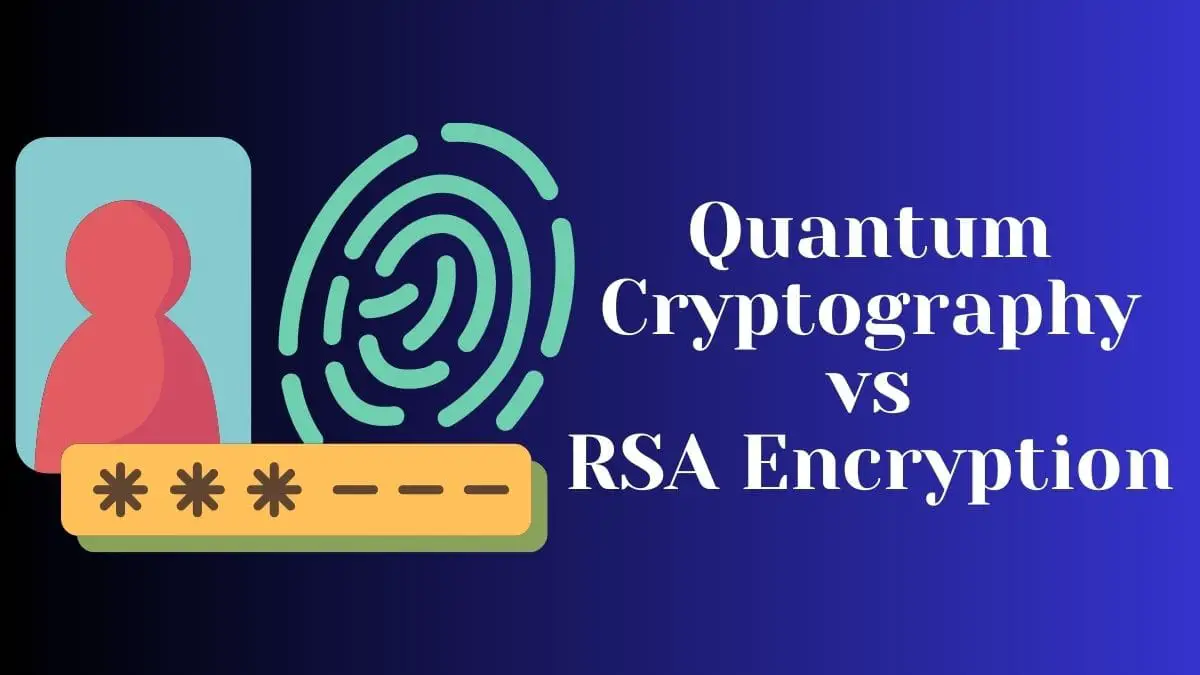In the ever-evolving landscape of cybersecurity, the debate over encryption methods has sparked significant interest, particularly in the juxtaposition of Quantum Cryptography and RSA Encryption. Understanding the implications of these technologies is crucial as we stand on the precipice of a potential transformative era in digital security. This article delves into the fundamental differences between these two encryption paradigms, unearthing their respective promises and challenges while illuminating the future of decryption.
To grasp the core of this discussion, we must first elucidate the principle mechanisms behind RSA and Quantum Cryptography. RSA, a long-standing pillar of encryption since its inception in 1977, is rooted in the mathematical complexities of factorizing large prime numbers. The robustness of RSA lies in the difficulty of this factorization; while it is straightforward to multiply two large primes, the reverse operation remains computationally prohibitive for conventional computers. As data breaches and cyber threats proliferate, the utility of RSA has been venerable, underpinning numerous secure communications globally.
However, the advent of quantum computing heralds a new epoch. Quantum computers utilize qubits, which can exist in multiple states simultaneously, to perform computations at breathtaking speeds. This exponential increase in processing power poses an existential threat to RSA. Algorithms, such as Shor’s Algorithm, leverage these quantum properties to factor large integers in polynomial time, effectively rendering RSA obsolete. As such, the paradigm of security built upon RSA’s mathematical foundation is being challenged, demanding innovative solutions that transcend the classical limitations of computation.
Enter Quantum Cryptography, a nascent yet revolutionary approach that promises unprecedented security. This methodology harnesses the peculiar nuances of quantum mechanics, particularly the principles of superposition and entanglement, to secure the transmission of information. At its core, Quantum Key Distribution (QKD) facilitates secure communication channels, rendering any eavesdropping detectable. This is made possible through the behavior of quantum bits (qubits); if an eavesdropper attempts to intercept a quantum key, the disturbance introduced to the qubits alerts the legitimate parties of the breach. Thus, while classical encryption hinges on computational complexity, quantum cryptography relies on the fundamental laws of physics.
The promising implications of Quantum Cryptography extend far beyond mere thwarting of eavesdropping. Its potential applications are vast, ranging from protecting sensitive government communications to securing financial transactions and safeguarding personal data. The emergence of this technology could catalyze a paradigm shift in how we conceptualize privacy and security. Organizations, having previously relied on the robust nature of RSA, must now reassess their strategies in light of quantum advancements.
Yet, the transition to Quantum Cryptography is fraught with its own complications. Expansive infrastructure is required for the deployment of quantum technologies. Currently, the implementation of QKD necessitates fiber optic networks, which can be prohibitively expensive and logistically challenging to install. Moreover, the distance over which quantum keys can be reliably transmitted is limited, which presents a significant barrier for widespread adoption. Researchers are actively exploring alternative techniques, including satellite-based QKD, to circumvent these limitations, yet practical implementation remains paramount for broader acceptance.
Furthermore, traditional encryption methodologies, such as RSA, are deeply entrenched in existing digital systems. The prospect of a sudden shift towards Quantum Cryptography engenders substantial challenges in terms of legacy systems. Organizations and institutions operating under established encryption protocols may face difficulties transitioning securely to quantum-safe alternatives. This scenario raises questions surrounding the lifespan of current encryption standards. How long can RSA continue to be deemed secure as quantum capabilities inch closer to practicality?
The interplay of RSA and Quantum Cryptography ignites a profound curiosity about our digital future. As the definitive timeline for the advent of practical quantum computing nears, the urgency of preparing for this transition intensifies. Collaborative efforts among researchers, policy-makers, and cybersecurity professionals will be essential to navigate this complex landscape. Open dialogue surrounding the ethical implications of these transformative technologies must also be paramount.
Education plays a pivotal role as we stride towards this quantum future. Professionals in the field of cybersecurity must be equipped with knowledge of both encryption methods and the implications of their differences. Recognizing that the shift is not merely a technological change but also a philosophical one is quintessential. The interplay between technological advancements and societal trust must be meticulously managed to instill confidence in future encryption methods.
In summary, as we grapple with the realities posed by the convergence of quantum mechanics and cybersecurity, it becomes imperative to foster a comprehensive understanding of the distinctions between RSA and Quantum Cryptography. The prospect of quantum advancements presents exhilarating opportunities; however, they are accompanied by substantial challenges that demand our collective attention. As we embark on this journey, the future of decryption beckons—a domain where the confluence of technology and security holds the potential to redefine our approach to safeguarding information in an increasingly connected world.








Leave a Comment